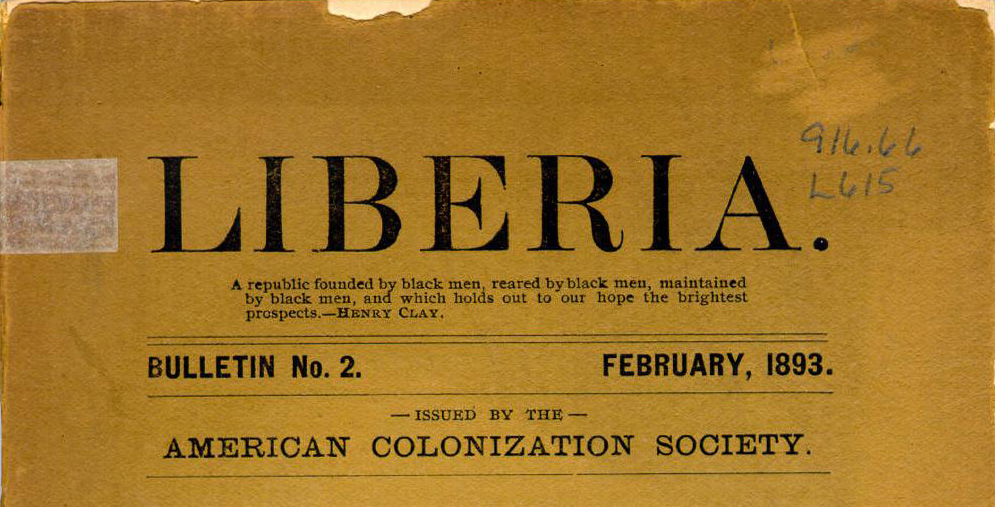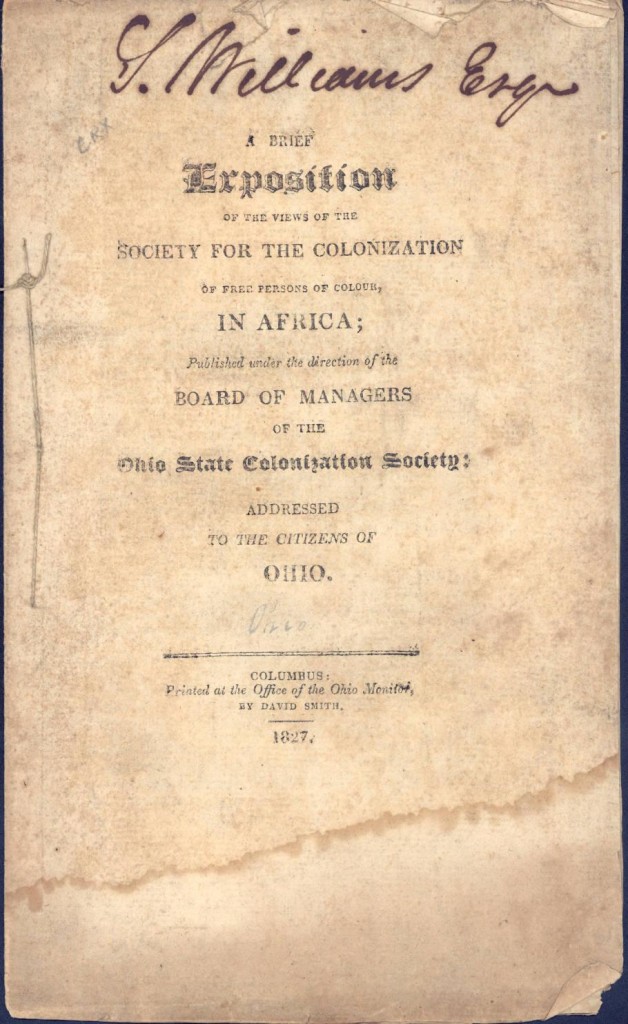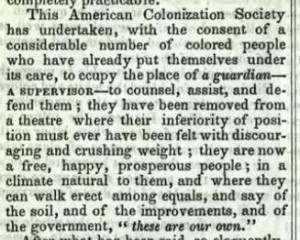“A Free, Happy and Prosperous People”


On February 6, 1820, the first organized group of African Americans migrated from the United States to present-day Liberia, due largely to the work of the Society for the Colonization of Free People of Color in America, also known as the American Colonization Society. According to the pamphlet A Brief Exposition of the Views of the Society for the Colonization of Free Persons of Colour in Africa, “a manumitted slave remains a negro still, and must ever continue in a state of political bondage… he who is deprived of the inherent rights of a citizen can never become a loyal subject.”
The meaning in this passage is twofold and reflects the attitudes of both pro- and anti-slavery activists. Those who were against slavery believed that free blacks would find more opportunities for prosperity in what the group saw as their “native” land. This first interpretation of the above passage is fairly clear. Slave holders and those who wished for slavery to continue, however, saw a different meaning, one that hinges upon the notion of becoming a loyal subject. To them, free blacks, regardless of whether they were born free or had been manumitted, were potential sources of insurrection and were reminders of all that their slaves could not currently achieve. They worried that, should the population of free blacks continue to grow, that growth would lead to uprisings. Creating the American Colonization Society and removing free blacks from the United States became a potential solution. In fact, the American Colonization Society was originally formed in 1817 by white slave holders who hoped to perpetuate the institution of slavery and discourage unrest. It was only later that abolitionists joined the cause.

The materials in Ohio Memory which relate to the American Colonization Society reflect a view that is almost entirely abolitionist, in keeping with Ohio’s role as an anti-slavery force in 19th century America. A large number of newspaper articles refer to the work of the Society and direct people towards their meetings. Other items, such as the Brief Exposition pamphlet above, or the 1853 Annual Report of the American Colonization Society, describe the goals and activities of the group. Still others reflect upon those activities from an outsider’s view, often well after the fact. These include researched articles such as this one, which describes anti-abolitionists in Granville and their reaction to the Society’s activities.
We recognize that these materials can be difficult for today’s reader. They are remnants of the past and, as such, to our modern eyes are sometimes racist and, thus, painful to read. We hope that you will bear in mind that they in no way reflect the attitudes of Ohio Memory contributors. We simply see them as offering insight into a difficult time in our nation’s history and, as such, are valuable resources for exploration.
Thank you to Shannon Kupfer, Digital/Tangible Media Cataloger at theState Library of Ohio, for this week’s post!



Leave a Reply
You must be logged in to post a comment.